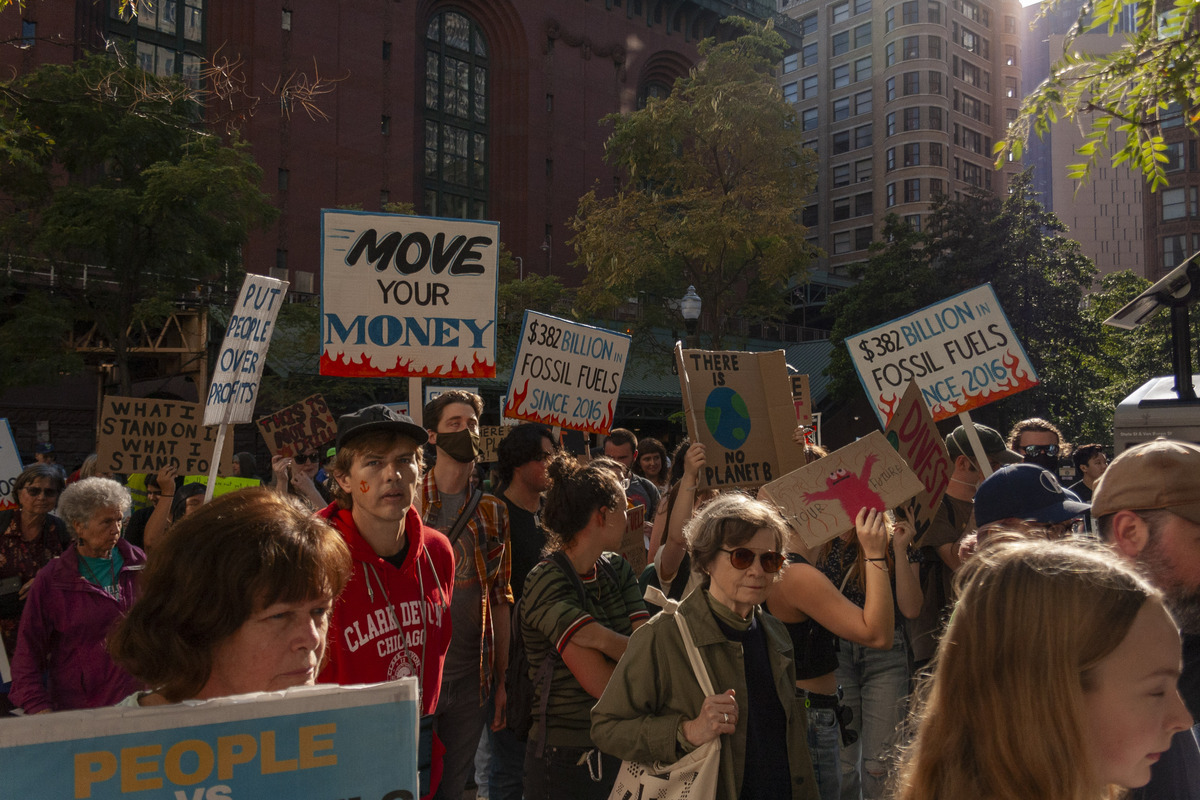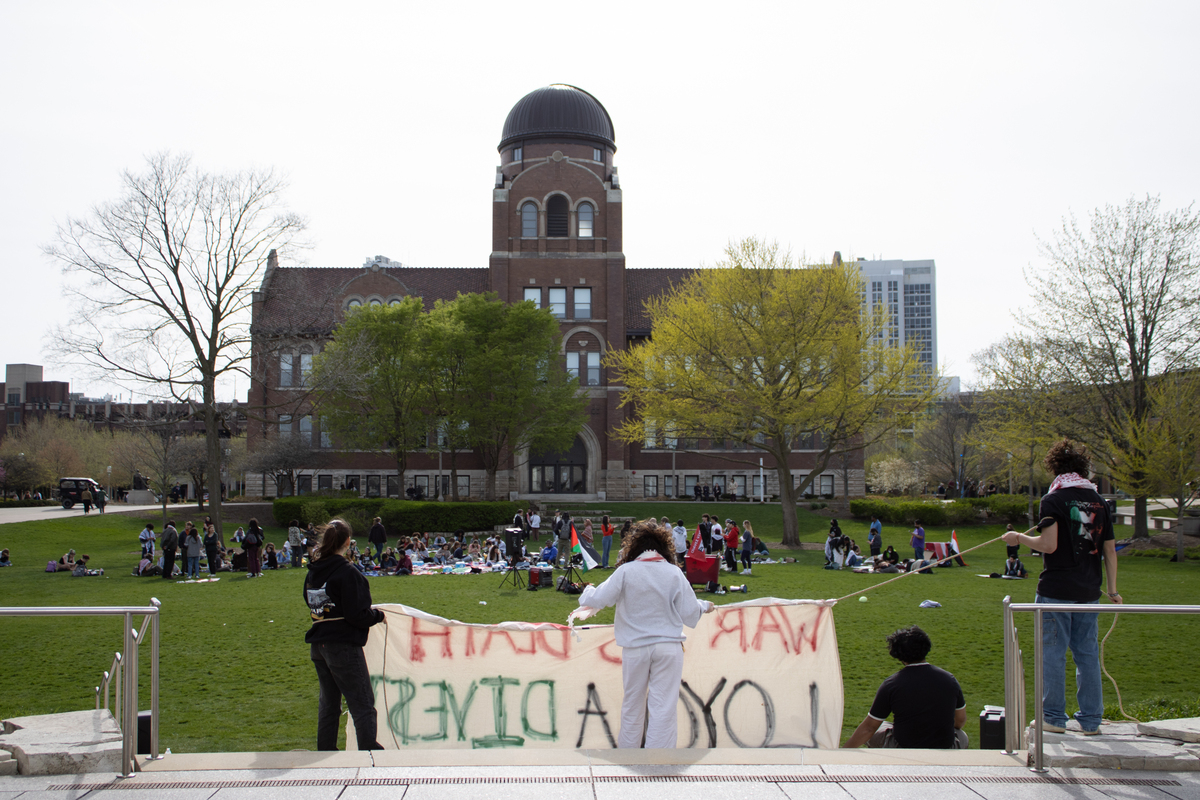After making landfall in late September, Hurricane Ian and Hurricane Fiona devastated the American southeast causing heavy damages.
Hurricanes Devastate American South East as Recovery Process Begins
Hurricane Ian and Hurricane Fiona devastated the southeast American coast at the end of September during the height of hurricane season.
Hurricane Fiona first hit Puerto Rico on Sept. 18. The hurricane brought heavy rainfall, causing mudslides to occur, with many bridges and roads damaged as a result, according to the Associated Press (AP).
Richard DiMaio, who teaches climate change at Loyola and specializes in meteorology, said while areas are susceptible to hurricanes, most were still underprepared.
“The infrastructure in Puerto Rico is not very strong, and anything that was recently rebuilt after Maria, it all came down again,” DiMaio said. “Puerto Rico is in really bad shape from Fiona.”
On Sept. 18, all of Puerto Rico’s more than three million citizens had lost power, according to AP.
“You have a lot of shorelines that got destroyed that need to be rebuilt,” DiMaio said.
DiMaio explained while climate change was not the cause for the hurricanes, it helped them gain momentum.
“The fact that Fiona was able to go all the way north, up into southeast Canada, is climate change, because the water in that part of the Atlantic is so warm,” DiMaio said.
Hurricane Fiona made its way up to southeastern Canada, mostly Nova Scotia, on Sept. 24. Fiona is one of Canada’s worst hurricanes ever along with the lowest surface pressure ever recorded in southeast Canada, according to the AP news as well as DiMaio.
More than 100 people have died as a result of Hurricane Ian, most being senior citizens from Florida, the AP reported.
Ian was about 50 miles across, with an eye of 30 miles across, according to DiMaio.
Hurricane Ian made landfall in western Florida and made its way up the east coast of the United States, according to National Environmental Satellite Data and Information Service. Thousands of people were without power, the AP reported, on Sept. 28.
At its peak, 2.6 million Floridian businesses and homes were without power. On Oct. 3, only 520,000 were without power, according to the AP.
“This is going to end up being the second costliest hurricane to Hurricane Katrina,” DiMaio said. “If you look at the property damage, not just houses, not just roads and bridges, but the boats and docks.”
Loyola sophomore Linda Castillo has sisters who went on a cruise that was supposed to be from Florida to the Bahamas, but ended early due to Hurricane Ian.
“It was a little nerve racking, but luckily they kept missing the eye of the storm,” Castillo said.
DiMaio also said some people not in the direct vicinity of the hurricanes were in a false sense of security from officials. Citizens were also misled when told Hurricane Ian was a Category 4, the same as Hurricane Charley in 2004. However, while both were in the same category, Hurricane Ian was a more intense Category 4 than Charley was. Citizens also were misled when told Hurricane Ian was a Category 4, which was a much more intense Category 4 hurricane than Hurricane Charley, DiMaio said.
Some students, like Taylor Shields, worry about the lack of attention given to Puerto Rico.
“Families have to be relocated, some people become homeless,” Shields said. “Puerto Rico especially won’t get the help they need. We need to give running water and money support to those islands.”
Puerto Rico had about $3 billion of damages, according to AP news.
Some Florida residents are looking to receive relief funds from the federal government. Florida Senator Marco Rubio said Florida will need at least $33 billion from the federal government, the AP reported. FEMA (Federal Emergency Management Agency) has been giving help to affected Florida residents through paying hotel costs, providing home inspections, providing flood insurance claims, etc., according to FEMA.
“The climate package that President Biden passed, the Inflation Reduction Act, provides a lot of money from the federal government for adaptation mitigation yet you had people like Floridian Governor DeSantis go against it,” DiMaio said. “Not a single Republican senator voted for that bill. This is something that’s been boiling up for years and is not going to go away anytime soon.”
The Inflation Reduction Act, according to the Whitehouse, is “the most aggressive action on tackling the climate crisis in American history, which will lift up American workers and create good-paying, union jobs across the country.”
While hurricane season appears to be starting to end, Hurricane Sandy’s 10 year anniversary is at the end of October, DiMaio said.
The National Oceanic and Atmospheric Administration in May predicted this hurricane season would be more intense than normal due to climate change.
Hurricane season officially ends on Nov. 30, according to the National Hurricane Center and Central Pacific Hurricane Center. DiMaio said these hurricanes should be the start of the end of hurricane season.










